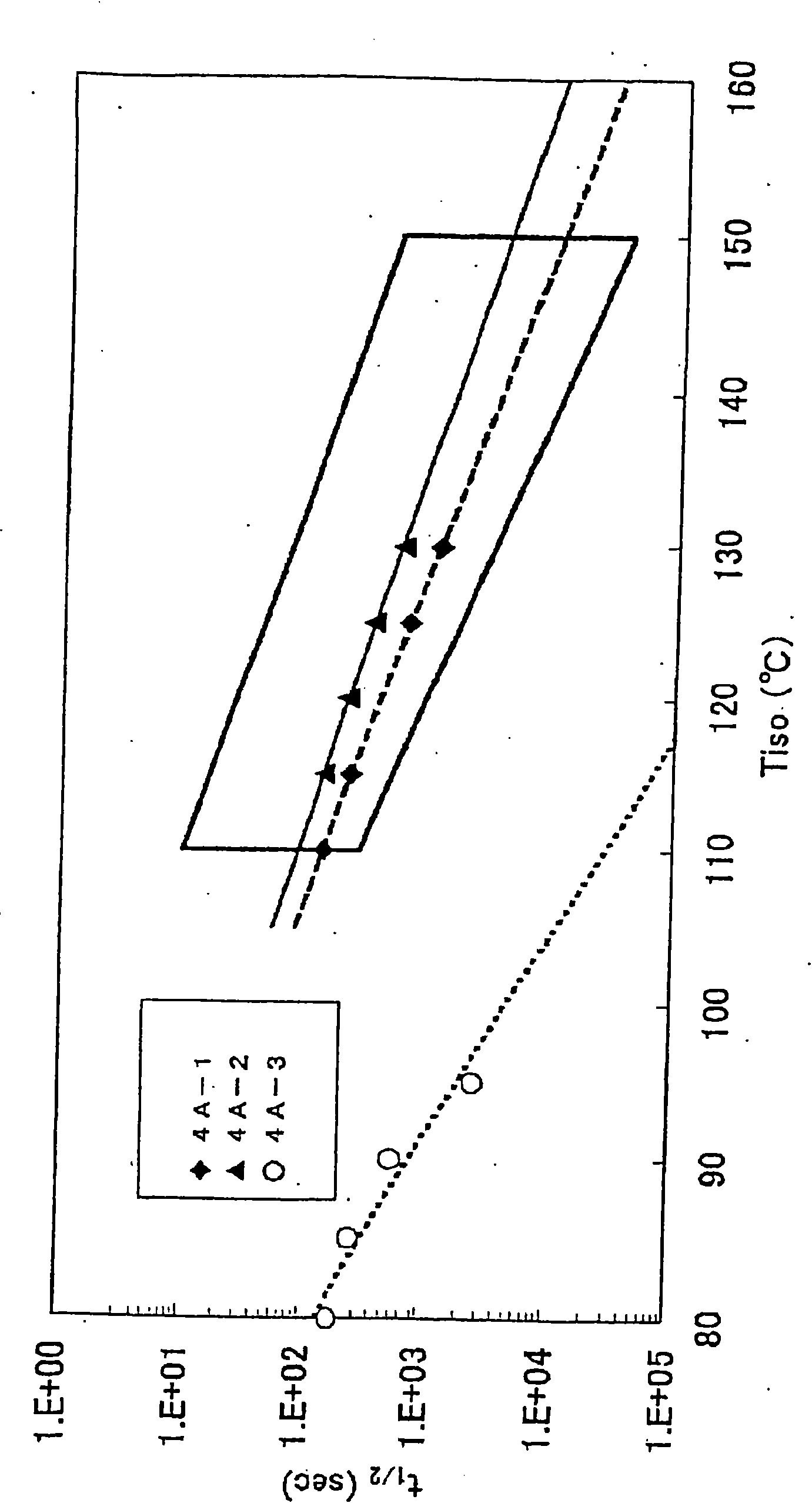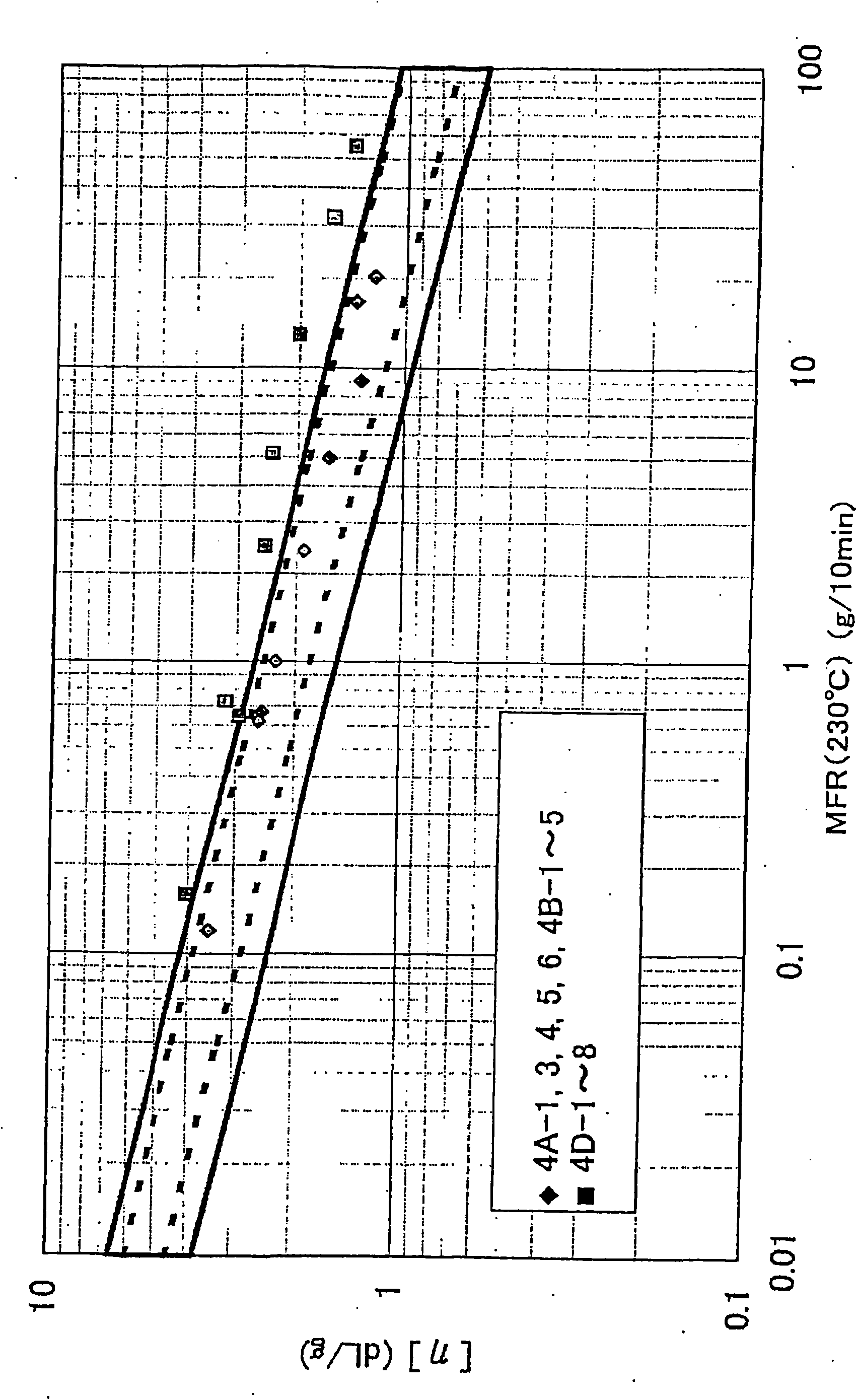Propylene polymer, a propylene polymer composition, and use of those
A kind of technology of propylene polymer and polymer, applied in the field of manufacture of molded body, propylene polymer composition and propylene copolymer
- Summary
- Abstract
- Description
- Claims
- Application Information
AI Technical Summary
Problems solved by technology
Method used
Image
Examples
Embodiment I
[1295] Hereinafter, the present invention (1) will be further specifically described based on synthesis examples and examples, but the present invention is not limited to these examples. While dibenzyl methylene (cyclopentadienyl) (3,6-di-tert-butylfluorenyl) zirconium dichloride, cyclohexylene (cyclopentadienyl) (octamethyloctahydrodibenzo Fluorenyl) zirconium dichloride, cyclohexylene (cyclopentadienyl) (octamethyloctahydrodibenzofluorenyl) zirconium dichloride, dimethylmethylene (cyclopentadienyl) (3 , 6-di-tert-butylfluorenyl) zirconium dichloride, dibenzylmethylene (cyclopentadienyl) (octamethyloctahydrodibenzofluorenyl) zirconium dichloride, diphenylmethylene Cyclo(cyclopentadienyl)(octamethyloctahydrodibenzofluorenyl)zirconium dichloride was synthesized according to the method described in the following patent documents.
[1296] Japanese Patent Laid-Open No. 2000-212194
[1297] Japanese Patent Laid-Open No. 2004-168744
[1298] Japanese Patent Laid-Open No. 2004-18...
Synthetic example 1-1
[1301] Dibenzylmethylene (cyclopentadienyl) (2,7-diphenyl-3,6-di-tert-butylfluorenyl) dichloride Synthesis of zirconium
[1302] (i) Synthesis of 2,7-dibromo-3,6-di-tert-butyl-fluorene
[1303] Under nitrogen atmosphere, in a 300mL three-necked flask, add 3,6-di-tert-butyl-fluorene 15.22g (54.7mmol ) and propylene carbonate 170ml, stirring. To this solution was added 20.52 g (115 mmol) of N-bromosuccinimide, followed by heating and stirring at 80° C. for 5 hours. Then, it was naturally left to cool, and the reaction solution was added to 800 mL of water, and stirred at room temperature for 15 minutes, and the precipitated solid was separated by filtration. The obtained solid was washed 5 times with 10 mL of ethanol. Then, a mixed solution of n-hexane and a small amount of dichloromethane was added to the solid, heated to 60°C to completely dissolve, and then left to stand overnight at -20°C. The precipitated crystals were washed three times with 5 mL of hexane to obtai...
Synthetic example 1-2
[1322] Di(n-butyl)methylene(cyclopentadienyl)(2,7-diphenyl-3,6-di-tert-butylfluorenyl)di Synthesis of Zirconium Chloride
[1323] (i) Synthesis of 6,6-di-n-butylfulvene
[1324] Under a nitrogen atmosphere, 15 mL of methanol and 11.8 mL (146 mmol) of pyrrolidine were added to a 200 mL three-necked flask. After cooling in an ice bath, 20.21 g (144 mmol) of 5-nonanone and 11.0 mL (146 mmol) of cyclopentadiene were added, followed by stirring at room temperature for 22 hours. 100 mL of diethyl ether and 100 mL of water were added, and the soluble portion was extracted. The organic layer was washed twice with water, once with saturated brine, and dried over magnesium sulfate. The solvent was distilled off, and the residue was purified by column chromatography to obtain the target product as a yellow oil (yield: 22.53 g, yield: 82%). Identification and utilization of target products 1 H-NMR performed.
[1325] 1 H-NMR (270MHz, CDCl 3 , TMS): δ / ppm 0.93 (t, J=7.3Hz, CH 2 ...
PUM
| Property | Measurement | Unit |
|---|---|---|
| tensile strength at break | aaaaa | aaaaa |
| melting point | aaaaa | aaaaa |
| melting point | aaaaa | aaaaa |
Abstract
Description
Claims
Application Information
 Login to View More
Login to View More - R&D
- Intellectual Property
- Life Sciences
- Materials
- Tech Scout
- Unparalleled Data Quality
- Higher Quality Content
- 60% Fewer Hallucinations
Browse by: Latest US Patents, China's latest patents, Technical Efficacy Thesaurus, Application Domain, Technology Topic, Popular Technical Reports.
© 2025 PatSnap. All rights reserved.Legal|Privacy policy|Modern Slavery Act Transparency Statement|Sitemap|About US| Contact US: help@patsnap.com



